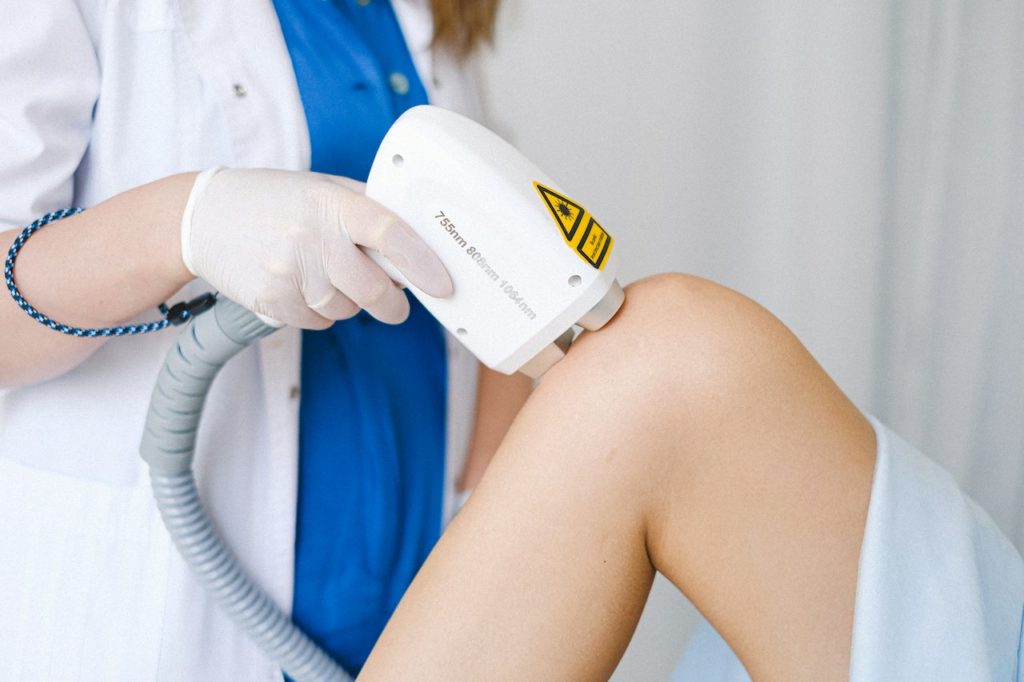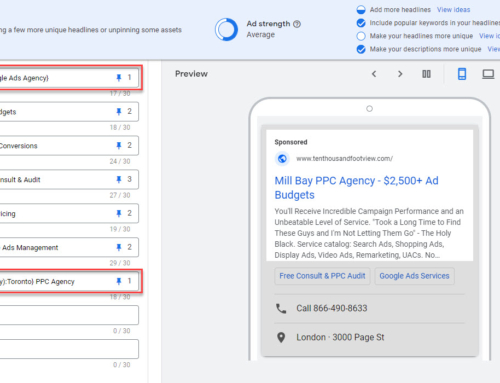This is the first in a series of articles I’ll be writing about Google Ads strategies for specific industries. This post will be about Google Ads for medical devices and will apply to both B2B and B2C companies.
This particular industry is dear to my heart. I spent most of my career working for several medical device startups here in Toronto before opening my agency.
DISCLOSURE: Some of the products mentioned in this post may contain affiliate links that at no additional cost to you, we may earn a small commission. Importantly, we only promote products that we use ourselves.
Before jumping in I want to be clear about the scope and constraints of this series.
Scope & Constraints
The strategies and tactics outlined are broadly applicable to most advertisers that market medical devices. However, every business is unique, and hence every Google Ads implementation needs to be as well. This article, alone, shouldn’t be the basis for building and optimizing your Google Ads campaigns. You should always work with an experienced Google Ads expert or take comprehensive training before making this type of investment.
Industry Description
The medical devices space is absolutely gargantuan and includes supplies that sell for pennies to multi-million dollar capital equipment. Products are sold direct to consumers, medical care professionals and clinics/hospitals as well as through a variety of complex distribution networks like wholesalers and dealers.
Whether you’re interested in lead generation, brand awareness, or online sales, Google has a variety of solutions that suit these needs.
Google Ads Eccentricities
In this section, I’ll cover some specific things you need to be aware of when running Google Ads for medical devices.
Marketing Claims & Ad Copy
The medical device industry is highly regulated. In most markets, including the US and Canada, marketing claims are vetted and approved by the FDA and Health Canada, respectively. In Europe, there are CE mark regulations, and in other countries, there is a similar product approval process.
The upshot is that advertisers need to be careful and deliberate about ad copy avoiding making claims they cannot support.
This means that, ideally, your PPC manager needs to have a playbook for what they can say and not say. Or you need a process to review and approve new ad copy through your regulatory team. At Ten Thousand Foot View, we generally work from existing landing pages or shared collateral material to avoid any problems.
Also, this means you absolutely must avoid running any dynamic ads as well as prevent any Google automation from generating copy. More specifically:
a) You need to ensure you don’t run dynamic search ads
b) You need to turn off URL expansion for P-Max campaigns
c) You need to always dismiss Google “recommendations” to enable automatically generated creatives
No Remarketing Allowed
Google doesn’t allow any remarketing in the medical space as per their health in personalized advertising policies. For the most part, this just means that you can’t add remarketing lists to your search campaigns nor can you run any display/discovery/YouTube remarketing campaigns. Likewise, automated dynamic remarketing ads won’t run for any P-Max/Shopping campaigns.
If you do happen to add a remarketing list to your search campaign your ads will typically be flagged as limited. This means they won’t run to anybody in those remarketing lists but will otherwise run normally.
There is a sort of workaround for remarketing which I’ll discuss a little later on in this post.
Search Campaigns
Applicable to just about every situation, virtually every medical device advertiser should run one or more search campaigns. The number of campaigns and complexity here is driven mainly by the combination of number of products offered along with your available budget.
This is primarily how you’ll generate leads or sales unless you have an online store. For non-e-commerce businesses, this campaign type will typically be your biggest ad spend if not all of it, depending on whether you utilize P-Max.
Product categories can generally fit into a single campaign split up by themed ad groups. In addition, we recommend running separate campaigns for your own brand and potentially running another campaign targeting competing brands. The latter is an advanced strategy that we typically recommend to smaller brands that have truly “built a better mousetrap.”
If you’re able to estimate the revenue for leads or track revenue for sales directly, I strongly recommend using value-based bidding once you can achieve at least 25 conversions per month in a given campaign. If you can’t track revenue you might consider another bidding method using our bid strategy guide from this article.
As with any search campaign, ensure you fully utilize your RSA ad copy slots and add all applicable assets (formally ad extensions).
In terms of keywords, start with phrase and exact match and ensure you use qualifiers to avoid running to adjacent markets or the wrong audience, e.g. showing ads to consumers when you only sell to businesses. A classic example of this is when you sell devices to practitioners but your ads show up for consumer queries for the service. In this case, using qualifiers such as “device” or “equipment” or “for sale” can ensure you’re not throwing money away on your ads.
P-Max Campaigns
I’ve written a comprehensive guide on how to build effective P-Max campaigns. Whether or not you want to run shopping ads it’ll steer you in the right direction.
If you are, indeed, running shopping ads, you may find that P-Max consumes the lion’s share of your total ad spend once you ramp up. Here are some things to keep in mind when it comes to P-Max and medical devices. If you don’t run shopping, P-Max may still cut into your search campaigns quite a bit. Try to keep the focus/budget mainly focused on search ads, which will give you more control and insight into what’s driving leads or sales.
Always turn off URL expansion. This will ensure that Google only uses your ad copy and only advertises landing pages and products you explicitly include in the campaign. It’ll avoid the issues I mentioned above about marketing claims.
In terms of audience targeting, this is one case where you can actually add remarketing lists to your campaign. Consider uploading your existing client list and adding recent website visitors to your asset groups’ audience signal. Since Google doesn’t target these users directly there is no conflict with their health privacy policies.
Don’t forget that you can’t run dynamic remarketing for medical devices. For that reason, it’s best not to enable dynamic remarketing in your Merchant Center account. If you do enable it you may receive a series of recommendations and emails from Google related to that. Don’t worry it’s not going to cause a performance problem, it’s just annoying.
Standard Shopping Campaigns
When starting a new project or expecting low conversion volume it may make more sense to start with a standard shopping campaign. This facilitates greater control over which SKUs to promote and allows you to build a negative keyword strategy.
As conversion volume grows you can eventually migrate to P-Max shopping. Don’t forget to ask your Google rep to copy over your negative keyword strategy to P-Max or implement account-level negative keywords.
Remarketing Campaigns Workaround
While you can’t run remarketing, you can show your ads to people that have visited your domain or searched for your brand by using custom segments.
Create a new custom segment and add your full brand name under People who searched for any of these terms on Google. Note that you can only use broad match here, so your ads will likely show to people who have searched for similar queries. Next, add your website domain to or people who browse websites similar to. This will target users that have either visited your site or similar sites such as competitors or related sites.
Add this list to a display, Discovery, or YouTube campaign to reach people that are interested in your products as well as people that are interested in your competitors’ products. This isn’t exactly remarketing, as the scope is much broader, but it is going to get you in front of the right audience.
While this post is specifically about Google Ads, it can be beneficial to run remarketing campaigns on Meta (Facebook) Ads or even LinkedIn Ads. These systems do not restrict the use of remarketing in healthcare making them great options to fulfil this need.
Other Campaign Types
I recommend adding Discovery and YouTube plus Display (less often) to raise brand awareness once you have the budget to support that. Typically this is once you’re hitting the $25K/month mark, but doesn’t necessarily have to be. Keep in mind that P-Max can take care of branding and mid-funnel for you. Building out stand-alone campaigns simply allows you greater control and insights which can be useful as you scale up Google and other channels.
Campaign Optimization Notes
Most Google Ads best practices (not necessarily the ones Google tells you) apply to medical device campaigns. One thing I strongly recommend in this niche is to use ad variation testing extensively. Since you may be restricted to what ad copy variations you can run, this will give you greater control over testing ideas.
Search terms review is absolutely crucial when starting new campaigns. It’s very easy to go off the rails showing your practitioner ads to consumers and wasting 90% of your ad spend on the wrong people. Even if you’re B2C, you may find that consumers are looking for somewhat different products than what you offer.
Add negatives as needed, pause low-relevance keywords, and add more qualifier keyword variations as needed.
Tools and other Tips
If you’re running any kind of lead generation I strongly recommend using CallRail or another 3rd party call tracking tool to capture those conversions in Google Ads and Analytics. Even if you only get another 25% of conversions, that can help tremendously with campaign optimization.
A tool like CallRail can also pull in form submission keywords and GCLIDS, allowing you to upload offline conversions such as deals that close up to 90 days after initial contact. Feeding these sales conversions and values back into Google Ads can have a significant effect on both lead quality and campaign performance over time.
Summary
Medical device companies have been slow to adopt Google Ads. Whether you’re B2B, B2C, selling capital equipment or inexpensive supplies, PPC can take your marketing to a new level.
Google does have some limitations for medical devices such as not allowing remarketing. Also, you need to be careful about how you manage creatives to stay in compliance with your FDA and other marketing claims. But other than this, Google Ads is a pretty straightforward marketing exercise.
If you’re new to Google Ads or struggling, consider hiring a freelancer or agency to help you scale up your program.






